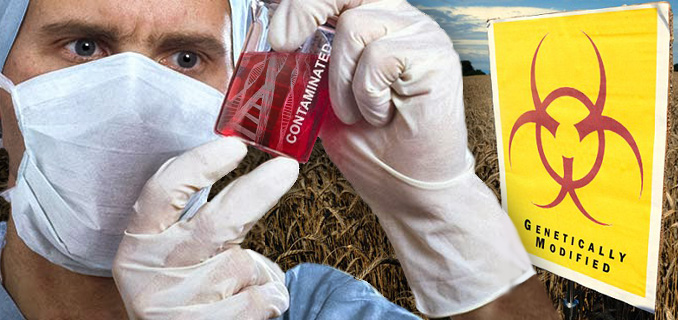
In a new study published in the peer reviewed Public Library of Science (PLOS), researchers emphasize that there is sufficient evidence that meal-derived DNA fragments carry complete genes that can enter into the human circulation system through an unknown mechanism.
It’s interesting to ponder if the scientists at these biotech corporations have already identified this method? In one of the blood samples the relative concentration of plant DNA is higher than the human DNA.
The study was based on the analysis of over 1000 human samples from four independent studies. PLOS is an open access, well respected peer-reviewed scientific journal that covers primary research from disciplines within science and medicine. It’s great to see this study published in it, confirming what many have been suspecting for years.
When it comes to genetically modified crops and foods, we really have no idea of what the long term effects will be on the public. The very first commercial sale of genetically modified foods was only twenty years ago in the year 1994.
There is no possible way that our health authorities can test all possible combinations on a large enough population, over a long enough period of time to be able to say with certainty that they are harmless. Geneticist David Suzuki recently expressed his concern, saying that human beings are part of a “massive genetic experiment” over many years, as thousands of people continue to consume GMO’s, and it makes sense.
Advances in genome science over the past few years have revealed that organisms can share their genes. Prior to this, it had been thought that genes were shared only between individual members of a species through reproduction. Geneticists usually followed the inheritance of genes in what they would call a ‘vertical’ fashion, such as breeding a male and female -you follow their offspring and continue down the road from there.
Today, scientists recognize that genes are shared not only among the individual members of a species, but also among members of different species.
Our bloodstream is considered to be an environment well separated from the outside world and the digestive tract. According to the standard paradigm large macromolecules consumed with food cannot pass directly to the circulatory system. During digestion proteins and DNA are thought to be degraded into small constituents, amino acids and nucleic acids, respectively, and then absorbed by a complex active process and distributed to various parts of the body through the circulation system. Here, based on the analysis of over 1000 human samples from four independent studies, we report evidence that meal-derived DNA fragments which are large enough to carry complete genes can avoid degradation and through an unknown mechanism enter the human circulation system. In one of the blood samples the relative concentration of plant DNA is higher than the human DNA. The plant DNA concentration shows a surprisingly precise log-normal distribution in the plasma samples while non-plasma (cord blood) control sample was found to be free of plant DNA.
It’s not like a human being mates with an apple, banana or a carrot plant and exchanges genes. What biotechnology and biotech corporations like Monsanto have done, is they have allowed for the transfer of genes from one to the other without any regard for the biological limitations, or constraints. The problem with this is that it is based on very bad science.
The conditions and biological ‘rules’ that apply to vertical gene transfer, at least those that we are aware of, do not necessarily apply to horizontal gene transfer. Biotech science today is based on the assumption that the principles governing the inheritance of genes are the same when we move genes horizontally as they are when they are moved vertically.
It just goes to show that GMO’s should be subjected to much more experimentation and rigorous research before we continue to consume them.
[...]
Read the full article at: naturalrevolution.org